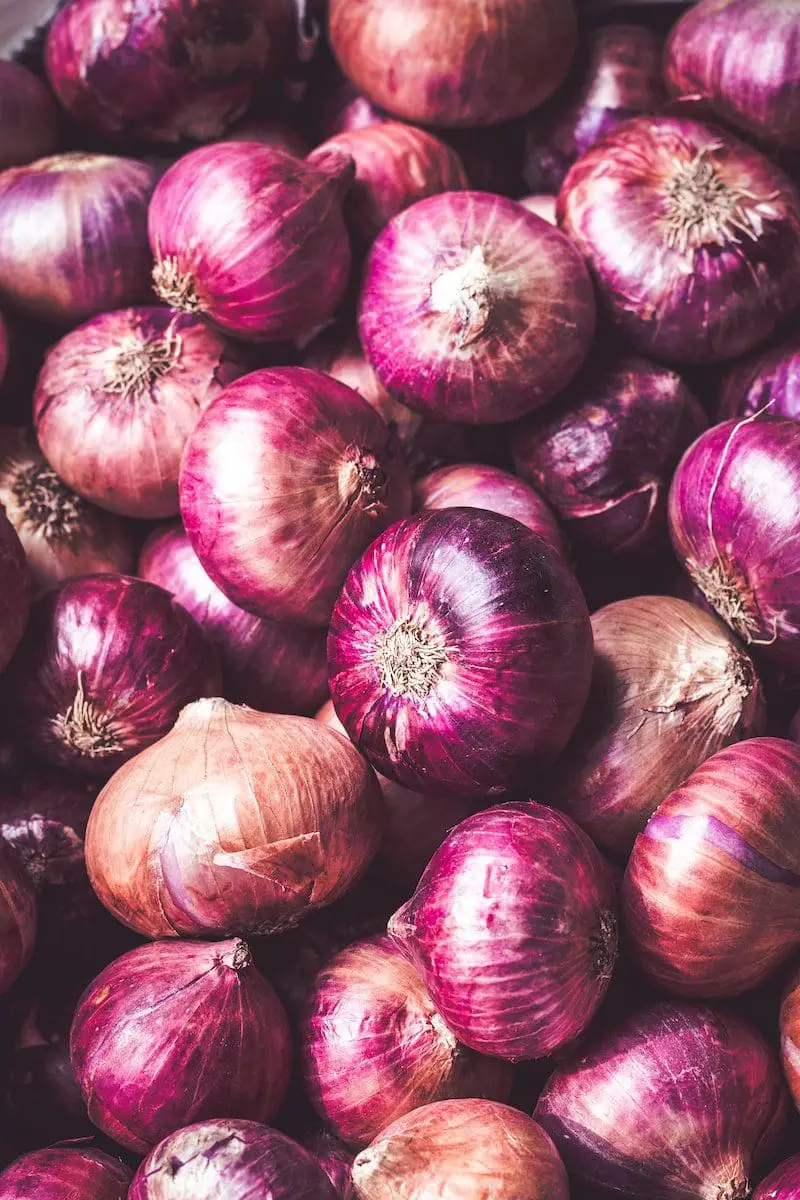Leeks and shallots are both categories of different types of onions. Both these vegetables are widely used for cooking knowingly or unknowingly, thinking they are onions in many families.
Even though leeks and shallots belong to the same category under onions, they differ in appearance and quality. Both these vegetables have their characteristics and properties which set them apart.
Key Takeaways
- Leeks are a member of the onion family and have a mild, sweet flavor, while shallots are a type of onion with a delicate, sweet taste.
- Leeks are larger than shallots and have a cylindrical shape, while shallots are smaller and slightly elongated.
- Leeks are commonly used in soups and stews, while shallots are used in dressings, sauces, and marinades.
Leeks vs Shallots
The botanical name of leeks is allium porrum, with an average height of 24 inches. On the other hand, the botanical name of shallots is allium cepa which has an average elevation of about 14 inches compared to leeks.

Even though they look like onions, their flavour is more delicate than onions. The white base and green stem attached to the leeks are used for making creamy soups and stocks by the people while cooking.
Shallots are vegetables that look like onions that are undergrown. Even though they look like onions, their flavour is mild compared to onions.
They are the best replacement for red onions. Their flavour stands out when sautéed with butter, garlic, or olive oil.
Comparison Table
| Parameters of Comparison | Leeks | Shallots |
|---|---|---|
| Botanical name | The botanical name of leeks is Allium Porrum. | The botanical name of shallots is Allium Cepa. |
| Average height | The average height of leeks is around 24 inches. | The average height of shallots is around 14 inches. |
| Sunlight Required | Only partial sun with light shade is required for a leek to grow. | There is full sun required for a shallot to grow. |
| Foliage | Leeks have foliage like an onion that is dark green. | Shallots have foliage like a regular onion. |
| Size compared to onions | Leeks are larger than compared to the onion. | Shallots are small compared to an onion. |
| Span of maturity | It takes around 75 days for leeks to attain maturity. | It takes around 90 to 120 days for shallots to attain maturity. |
What are Leeks?
Leeks are vegetables that look like overgrown onions. The white base and green stem attached to the leeks are used for making creamy soups and stocks by the people while cooking. Leek plants can be directly seeded outdoors or indoors too.
When the leek is trimmed while growing, it grows even faster and more significantly than usual. After harvesting, leeks can be stored for around 14 days. Leeks look like giant onions.
This vegetable is used in large areas for cooking purposes. The only difference is that people don’t know they are leeks because they feel it’s just a large onion.

What are Shallots?
Shallots are vegetables that look like onions that are undergrown. Even though they look like onions, their flavour is mild compared to onions. They are the best replacement for red onions.
After shallots are harvested, the bulbs shallots can be stored for up to 6 months. Shallots can be quickly grown inside a house garden just by the seeds.
The size of a shallot is half of that of an onion. They are covered with paper-like bulbs around them. Some people eat shallots, even raw. A person who uses shallots in their cooking strengthens the immunity of the person intakes them.
Shallots are a bit more expensive as compared to red onions and leeks. There involves a lot of work like peeling and trimming once the shallots are harvested.

Main Differences Between Leeks and Shallots
- The botanical name of leeks is allium porrum, and on the other hand, the botanical name of shallots is Allium cepa.
- The average height of leeks is around 24 inches, while the average size of shallots is around 14 inches.
- Only partial sun with light shade is required for a leek to grow; however, full sun is required for a shallot to grow.
- Leeks have foliage like an onion which is dark green, and on the other hand, shallots have foliage like a normal onion.
- Leeks are larger than compared to the onion, and on the other hand, shallots are small as compared to an onion.
- It takes around 75 days for leeks to attain maturity; on the other hand, it takes around 90 to 120 days for shallots to attain maturity.





